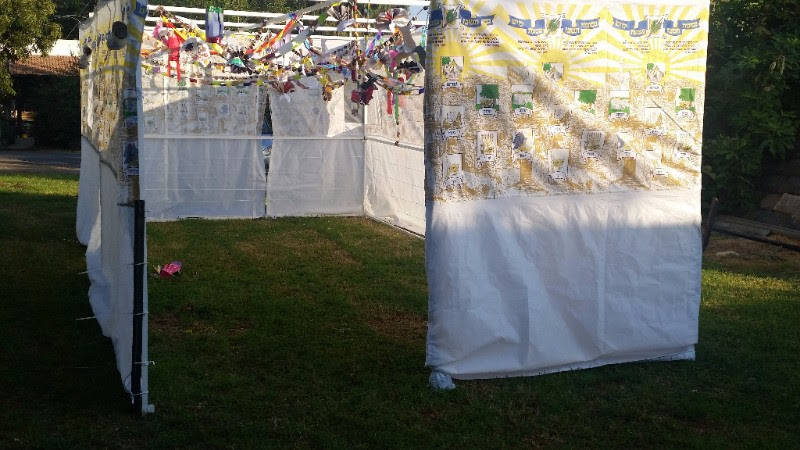| ||||||||||||||||||||||||||||||||||||
| ||||||||||||||||||||||||||||||||||||
| ||||||||||||||||||||||||||||||||||||
|
Showing posts with label etrog. Show all posts
Showing posts with label etrog. Show all posts
Wednesday, October 4, 2017
Newsletter: The Shelter of Faith: the Feast of Tabernacles plus a FREE GIFT - JesusBoat.com
Friday, September 25, 2015
The Photogenic Sukkot Festival -- 100+ Years Ago. Another Mystery Photo
Israel's History - a Picture a Day (Beta) |
|
Posted: 24 Sep 2015
The Jewish festival of Sukkot is called by several names: the Harvest festival, the Joyous festival, and the festival of Booths. Jewish families construct temporary huts -- Sukkot -- where they eat and some even sleep for the week-long holiday. Jews traditionally pray during the holiday while holding a citron fruit and branches of myrtle, palm and willow branches -- called the lulav and etrog.
And Now the Mystery Picture -- The Occasion for this Photo
We recently found this photograph of Australian soldiers at the Western Wall in an Australian library archives and posted it on this site. The men fought in World War I in Palestine in 1917-1918.
The shadows suggest it was photographed around noon. Several men appear to be wearing white caftans, called a kittel, normally worn on Yom Kippur. But if the day were Yom Kippur, where were the throngs of worshippers?
Another section of the picture may provide the answer. It suggests the day was actually the seventh day of Sukkot, a day called Hoshana Rabba, when some men have a custom to wear akittel. The hour was well beyond the traditional morning prayer period so the crowd was sparse.
The woman conversing with the Australian soldier may be holding a lulav (between her left shoulder and knee); the soldier may be holding the etrog.
Sukkot 1918 would have been a holiday for everyone in the picture: The Jews were liberated from the oppressive Turks, and the Australians Light Horsemen were on their way home after hard-fought battles in the Sinai, Beer Sheba, and east of the Jordan River.
The date: September 27, 1918.
|
Subscribe to:
Comments (Atom)












